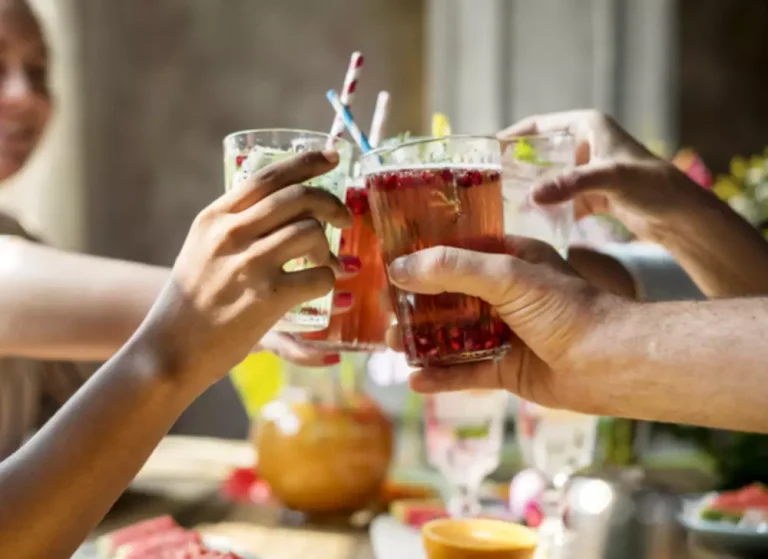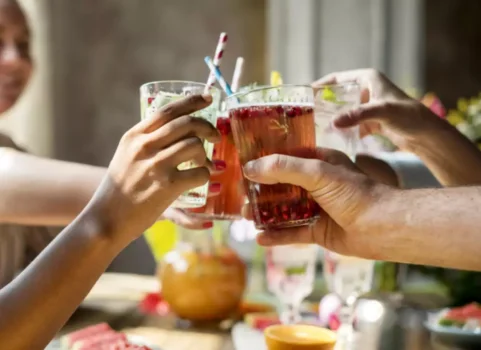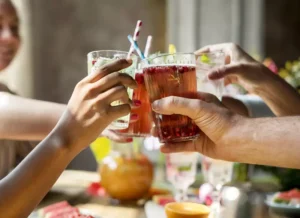
When they come out, others notice them because they’re not a part of the everyday social why does alcohol make people violent experience. Likewise, hostility is an attitude of resentment and unfriendliness that doesn’t require feelings of anger. “In a society where there’s a lot of pub-related violence, or violence that’s seen when you’re drinking at sporting events, it becomes more socially condoned,” she says. There is increasing evidence that subtle variations in brain function mean some people behave worse than others when they have a few drinks.

Alcohol can affect men’s and women’s health differently
LSD (“acid”) is a psychedelic drug that binds to certain serotonin receptors in the brain. So, LSD can lead to significant changes in consciousness and perception that are therapeutic in clinical settings. But people can become overwhelmed by the changes in perception caused by LSD at festivals, leading some people to become distressed and occasionally unaware of their actions. There are no studies showing a clear link between the use of LSD and violence.
Alcohol, Aggression, and Violence: From Public Health to Neuroscience

In many cases, even moderate drinking (defined below) appears to increase risk. Despite this, less than half of the US public is aware of any alcohol-cancer connection. That’s why the Surgeon General issued an advisory in January 2025 recommending that alcoholic beverages carry new labels warning of the alcohol-cancer link and highlighting that no safe low level of alcohol consumption has been established.
Alcohol and Domestic Abuse/Violence

Behavioral therapies can help those struggling with issues such as aggression get to the root of the problem and better understand the triggers and coping mechanism that may have led to alcohol abuse. Alcohol impairs cognitive function, which means it is more difficult to problem-solve, control anger, and make good decisions when drinking. Decreased cognitive function also means it’s more likely for you to misread a situation and overreact.
- Others can be affected by alcohol-related violence too, including wider family and friends as well as children.
- In line with this, using a sample of 85 countries, Weiss et al. (2018) reported no association between alcohol consumption level and homicide rates; however, they found a positive association between hazardous drinking pattern and homicide rates.
- That’s why the Surgeon General issued an advisory in January 2025 recommending that alcoholic beverages carry new labels warning of the alcohol-cancer link and highlighting that no safe low level of alcohol consumption has been established.
- And the balance of risk and benefit likely varies from person to person, based on individual factors such as genetics and lifestyle factors.
- Drinking cocktails that include energy drinks should be considered a possible factor for aggressive behavior as well.
- The UAB Medicine Addiction Recovery Program offers an individualized approach to assessing and treating alcohol and substance use disorder.
Health Conditions
- Drinking can have a relaxing or anxiety-relieving effect by mimicking the “chill-out” effects of GABA.
- They measured how much electric shock each person could tolerate before finding it painful, and then set up a competitive game where participants could choose how intensely to shock their “opponent” after winning each round.
- Perhaps you think about the many potential negative consequences of getting into a verbal or, even worse, a physical fight.
- This can put a person at risk of becoming ill, getting injured, or dying sooner.
- Hence, even though alcohol might be the precursor to violence for some, it certainly takes more than the beverage to increase the likelihood of someone shooting from the hip.
In particular, the media is more likely to link illegal drugs with violent crimes, sexual assaults and murders than alcohol. marijuana addiction This is despite one study finding 47% of homicides in Australia over a six-year period were alcohol-related. Once again, we found that when inhibitory cues were noticeable and unavoidable – in this case, cues that increase self-awareness – aggression was reduced among drunk participants. And, of interest, exposure to self-awareness cues only reduced aggression for heavy drinking men who endorsed certain traits that suggest receptivity to self-introspection (Purvis, Gallagher, & Parrott, 2016). With some insight into factors that can cause rage or aggression while drinking, you can take steps to avoid certain behaviors.
- Anger is an emotion made up of many different feelings like dissatisfaction, displeasure, hurt, and frustration.
- Further research into alcohol-related aggression in alcohol-dependent patients receiving treatment has shown that the degree of violence correlated to the level of alcohol consumption.
Alcohol, Aggression, and Violence: Psychiatric Comorbidities

Additionally, repeated drinking may alter GABA receptors and even damage cells, causing reduced sensitivity to the body’s own relaxing neurotransmitter (8). Drinking can have a relaxing or anxiety-relieving effect by mimicking the “chill-out” effects of GABA. At the same time, alcohol hinders the neurotransmitter glutamine, which has a stimulating effect.

Further research into alcohol-related aggression in alcohol-dependent patients receiving treatment has shown that the degree of violence correlated to the level of alcohol consumption. For example, alcohol-dependent patients exhibited violence towards their partners four times more frequently than non-alcohol-dependent controls. This behavior decreased significantly, however, one year after treatment in patients who successfully remained abstinent (17). In the group of individuals receiving treatment, the percentage of alcohol-dependent patients who perpetrated domestic violence fell from 56% before treatment to 25% one year after treatment. In patients who remained abstinent, the proportion was comparable to the figure for the control group, at only 15%. Similar changes in both of these neurotransmitters have been found in chronic alcohol drinkers, and it is believed likely they play a role in violence in non-alcoholic binge drinkers too.
